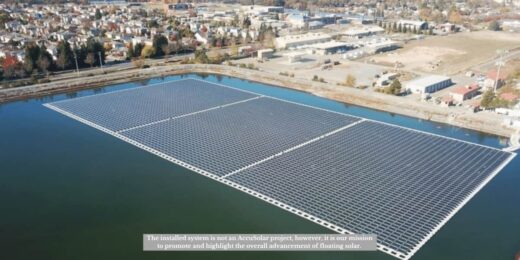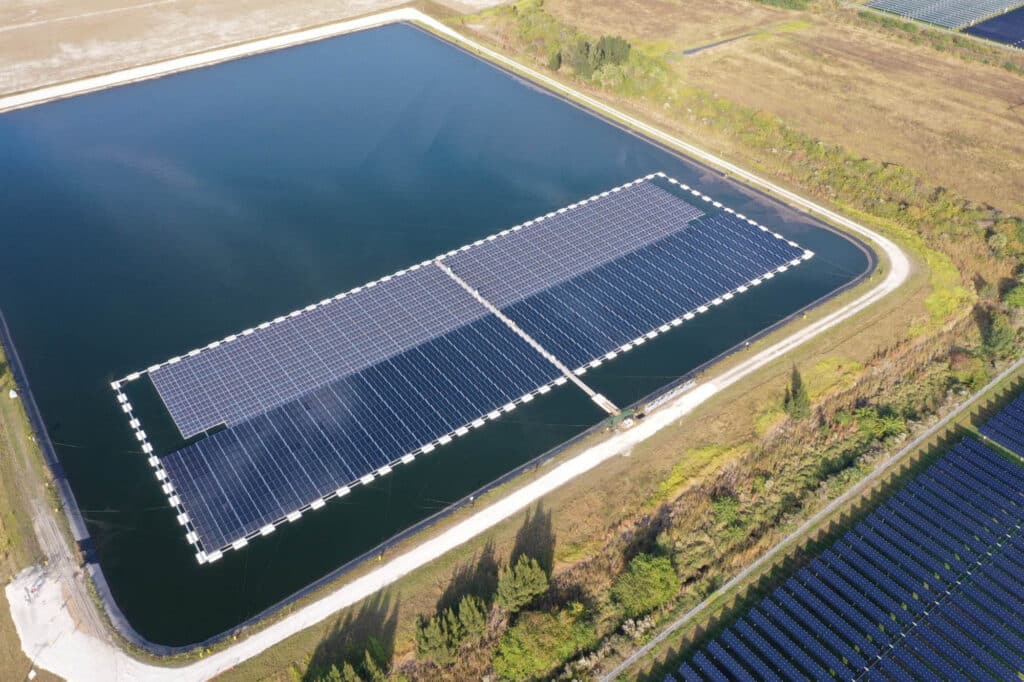When it comes to solar energy, many factors need to be considered. One of the most important is where to install solar panels. Mounting them over water can increase their efficiency by up to 15%! Read on to find out why and how this happens.
Floating Solar Panels
Solar panels are one of the most efficient ways to produce renewable energy, but they have a significant drawback — they require a lot of space. That’s where floating solar comes in. Floating solar platforms are anchored and installed on water bodies like reservoirs and ponds.
History of Floating Solar Panels
The first floating solar panel was patented in Italy in 2008, and since then, the technology has been rapidly adopted by countries worldwide. China is currently the world’s leading producer of floating solar arrays. Other markets for floating solar platforms include Australia, India, South Korea, and the United States.
Floating solar arrays have a few key advantages over traditional ground-mounted systems. First, it doesn’t require large tracts of land, which can be expensive or difficult to obtain. Second, the water cools the panels, which increases their efficiency.
It has been estimated that if all the world’s reservoirs were equipped with floating solar arrays, they could generate more than enough electricity to meet global demand.
Floating Solar Platform Efficiency Over Water
Floating solar platforms have several advantages over traditional ground-mounted solar panels. They are less expensive to install and maintain, and they offer several benefits for energy production and efficiency.
Floating solar platforms can capture more sunlight than ground-mounted solar panels due to their position above the water. The reflective surface of the water also increases the amount of light reflected onto the floating platform. This results in increased electrical output from the system.
In addition, the cooling effect of water helps lower the temperature of the floating platform than it would be on land. This reduces thermal losses and enables the system to operate more efficiently. It has been reported that they are up to 16% more efficient than their land-bound counterparts.
Overall, floating solar platforms offer several advantages for energy production and efficiency. They are cheaper to install and maintain and can offer increased levels of solar radiation absorption. These factors make floating solar platforms an attractive option for those looking to reduce their carbon footprint and save money on their energy bills.
Why Install Solar Panels Over Bodies of Water
Water helps cool the solar platforms to increase their efficiency. It also reflects sunlight, which can help to increase the amount of light that reaches the panel. Additionally, installing solar platforms over water can help to protect them from weather damage and vandalism.
There are a few things to keep in mind wheninstalling solar panels over water. First, the panels must be properly anchored to prevent them from floating away or being damaged by waves. Second, the electrical wiring must be able to withstand the elements. Finally, the panels should be installed in an area where they will receive direct sunlight for most of the day.
Floating solar arrays are a great way to generate renewable energy. Installing them over bodies of water can help to increase their efficiency and protect them from damage. Keep these considerations in mind when planning your installation.
Global Shift Toward Renewable Energy
In recent years, there has been a dramatic increase in investment in renewable energy projects around the world. According to EUCI, global investment in renewables reached a record $501.3 billion in 2020, with solar and wind accounting for the lion’s share of this total.
This trend is set to continue in the coming years as more and more countries commit to transitioning to cleaner energy sources. China, for example, has pledged to achieve carbon neutrality by 2060 and is investing heavily in renewables as part of this goal. Meanwhile, in the European Union, renewable energy is seen as a vital component of their plans to achieve climate neutrality by 2050.
As the global shift toward renewables gathers pace, it is important to understand the motivations behind this trend and the challenges that must be overcome to make it a reality. The motivations for the global shift toward renewables are varied. In some cases, it is driven by environmental concerns — many countries are committed to reducing their greenhouse gas emissions. In others, it is motivated by economic factors — as renewable energy technology becomes more advanced and cheaper to develop, it is increasingly seen as a viable alternative to traditional forms of energy generation.
Floating solar platforms are the next step in bringing more efficient solar technology to market. By installing panels over water, we can take advantage of the cooling effect that comes with it. This not only increases efficiency but helps to offset some of the environmental impact caused by traditional land-based solar installations.
If you’re interested in learning more about how floating solar could work for your business, contact us. We would be happy to discuss our options and help get you started on making the switch to this innovative new technology.





